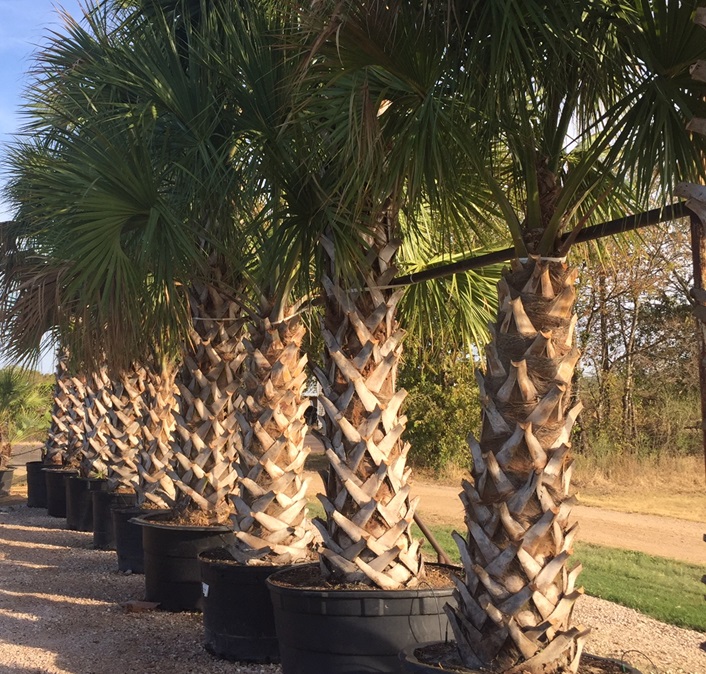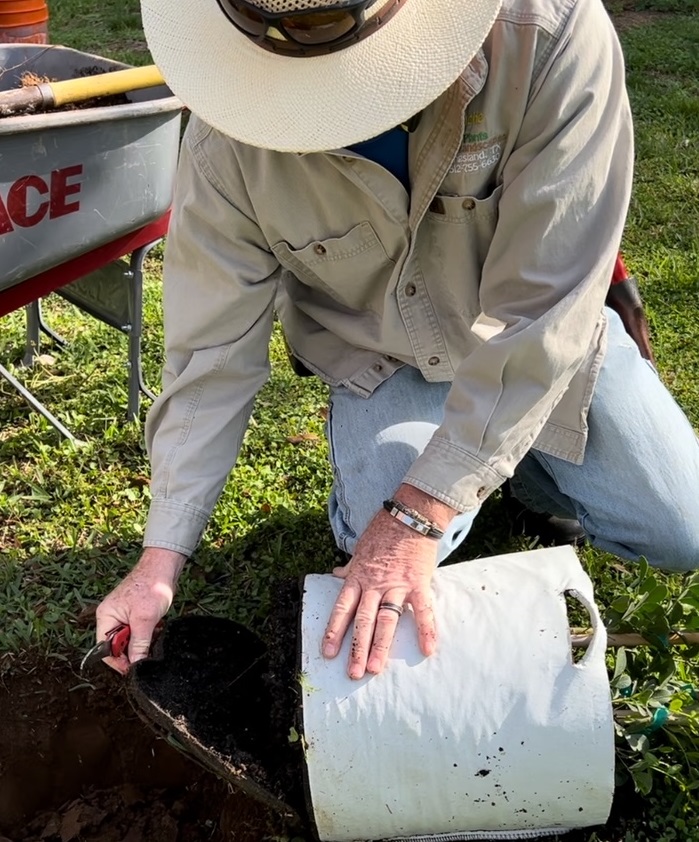2011 Freeze Update April 1
So many questions!!! Is it dead or alive? Do I cut it back or wait? Should I replace it with something else?
Unfortunately, it is impossible to provide a “blanket answer” to these important questions. Each situation is different, and each outcome will also be different.
Is it dead or alive? At this point, if it has not begun leafing out, the best way to evaluate it is to see if the twigs are still flexible. If they snap, cut them down. They may still be “scratching green”, but that is not always an indicator of viability.
This is probably the last update that we will have on the freeze, as I am sure you have heard before that “time will tell”. Please note that this information is for CENTRAL TEXAS, and that each situation is likely to be different.
Here are the plants that are most likely not going to survive (but there may be exceptions!):
Rosemary Esperanza
Sandankwa Viburnum Loropetalum
Confederate Star Jasmine Fig Ivy
Olive trees Lantana
Waxleaf Ligustrum Loquat
Yellow Butterfly Vine Indian Hawthorn
Gardenia Bamboo
Pride of Barbados Plumbago
Bottlebrush Sago Palm
Mediterranean Fan Palm Mexican Fan Palm
Pomegranate Pampas Grass
Thinleaf Sotol Most Agave
Golden Barrel Cactus Thryallis
Gold Zest Cestrum Citrus
Jap. Blueberry Tree Huisache
Bicolor Iris Some Orn. Grasses
Carolina Jessamine
Here are some plants that may (or may not) come back from a stump or from the roots. If the tops are dead, cut them down:
Wax Myrtle Oleander
Texas Sage Fig Tree
Nandina Pyracantha
Shrimp Plant Salvia greggii
Some Crape Myrtles Loropetalum
Firecracker Fern Evergreen Sumac
Texas Mountain Laurel Bay Tree
Primrose Jasmine Anacacho Orchid
Should I replace with it something else?:
Please remember that this was a “once in a lifetime” event. (We hope.)
The reason that we have been bringing in many of these plants is that we have needed deer resistant plants or drought resistant plants. Our plant pallet needed to be expanded to do that. Yes, native plants are definitely the survivors, but many residential applications require plants for screening or color that may be a bit out of our
“native zone”. The “Southwest” landscape craze has made Agave, Cacti and Yucca more popular.
Many of the plants lost were actually deemed cold hardy to Zone 8, which is the Zone where we live. Unfortunately, we did not have a “Zone 8” winter storm. Winter storm URI was so much colder and occurred after we had experienced a relatively warm winter. This set the stage for extreme loss.
So, should we replace with the same plants?
In most cases, the answer is YES.
Rosemary is evergreen, deer resistant and drought resistant. And you can cook with it.
Texas Sage is evergreen, deer resistant and drought resistant. It provides summer blooms.
Sandankwa Viburnum is evergreen, deer resistant and grows in sun AND shade. It is great for screening.
Agave are drought resistant, evergreen and deer resistant. There is NO substitute for their form.
Esperanza, Bottlebrush and Pride of Barbados give us summer color like no others.
This is just the beginning of the list of plants that we have incorporated into our landscapes that there are really no substitutes for. If you can think of substitutes that would have survived our Winter Storm Uri and are also drought resistant, please let me know, because I am struggling.
The good news is that most of our native trees, shrubs and perennials are starting to come back. Here are some for your consideration:
Mexican Buckeye Red Buckeye
Agarita Elbow Bush
Cedar Elm Bur Oak
Chinquapin Oak Yarrow
Gregg’s Blue Mistflower Turk’s Cap
Texas Persimmon
So, what should we have learned from this winter storm?
First, do not plant too many of one variety of plant. If it is lost to ANY reason, the loss is BIG.
Second, plant the more tender plants on the South-Southeast side of a structure for protection. Avoid Northern exposures for these plants.
And third, never take Mother Nature for granted!





Dear Mary Kay.
I have thought of the statement “do not plant too many of one type of plant because the loss can be substantial if disease, insects or radical weather take them down”. You lectured on this years and years ago and I have always remembered this. As you know, our yard was decimated by the freak February snow and ice storm. All of our sandankwas turned to a dry rust color and leaves stayed attached to the limbs which is not a good sign.
There were so many things I lost to the storm…or thought i had.
Here is the good news.
My entire Sandankwa hedge that we cut down to the ground with anticipation of it having to be replaced is coming back from the roots!!!! I am ecstatic. Naturally, it will be a few years before they become what they were, but just to see green leaves emerging from their base is enough for me to celebrate.
Another dead plant that I cut all the way down to the ground with the intention of digging it up are my pineapple guava plants. Today I found a re-sprouting of leaves at the base. Here too, it will be a long time before they regrow to what they were, but feeling joyful about life being discovered.
My Thyrallis is budding out at the lower level of the plant. Yay!
My wax leaf ligustrums are coming back SLOWLY. Little leaves appearing within the skeleton top and all along the trunk. yay!
My Indian Hawthorne, which I thought was dead, has leaves coming out of the base and. a couple of leaves way high up. I will be patient and enjoy watching it come back to life. This was even after scratching the trunk and not finding a green under skin.
I thought I would let you know the update so if people contact you, you can add this email as evidence that all is not lost.
My Nandinas were reduced to skeletons but have filled out beautifully.
The only thing that bit the bullet was our bay laurel tree. I was sad to see it go. It was very large and aromatic.
So, that is it for now! All my hollies came through with flying colors!
Thanks for all your help earlier on. You gave me hope.
Warm regards, Juanita
Hi Mary Kay, I’ve been looking back through these posts because I’ve had a specific problem with my Texas Sage since the giant ice storm this winter. Of course, after the storm, all the leave came off. In April, I had some landscapers come and trim the bushes back and remove some dead lantana nearby. They didn’t do a great job and really just hacked at everything with a chainsaw. I was pretty surprised/annoyed because they were supposed to be tree trimming specialists. ANYWAY, I pruned them a bit more delicately and one of the bushes has come back full steam. The one next to it is much more anemic and many of the branches are still bare.
More importantly, I’ve noticed on a couple branches that leaves have started growing back then wilted and died. This is happening on both bushes but more so on the sadder bush.
Is this just because of the not-so-great trim job or do you think there might be something else? Also, anything I can do to aid the sad plant? Fertilizer, compost, etc?
Thanks so much!
Unfortunately, we are not finished with the aftereffects of the winter storm. As trees and plant begin to leaf out again, we cannot be certain that they will survive, as we do not yet know the extent of the damage to each individual plant.
I have seen a wide range of effects to the Texas Sage. Some are coming back nicely and others not so much. A lot depends on the age, health of the plant going into the freeze, exposure, soil type, how well established they were, etc. You did not say how healthy they were going into the freeze. Were they all in the sun or some in more shade? Were any of them stressed by insects last year? Were any of them over 15 years old? These are all factors that enter into their general health.
As you can see, there are many factors involved. When plants leaf-out then the leaves turn brown and die, it may mean that the root system or vascular system was damaged too badly to support the flushing foliage.
We are not recommending fertilization at this time, as we do not want to encourage new growth that cannot be supported.
Again, patience is key.